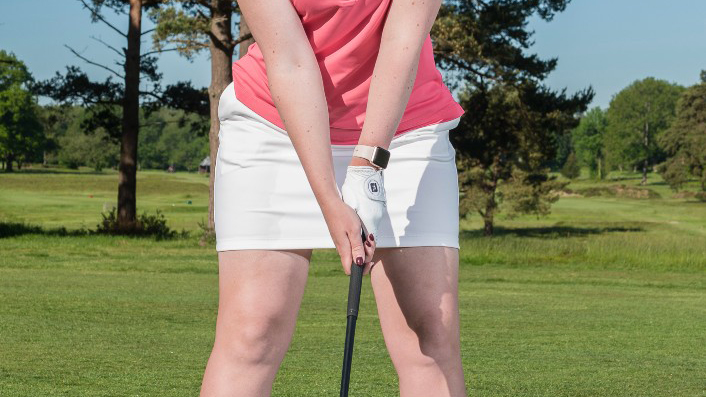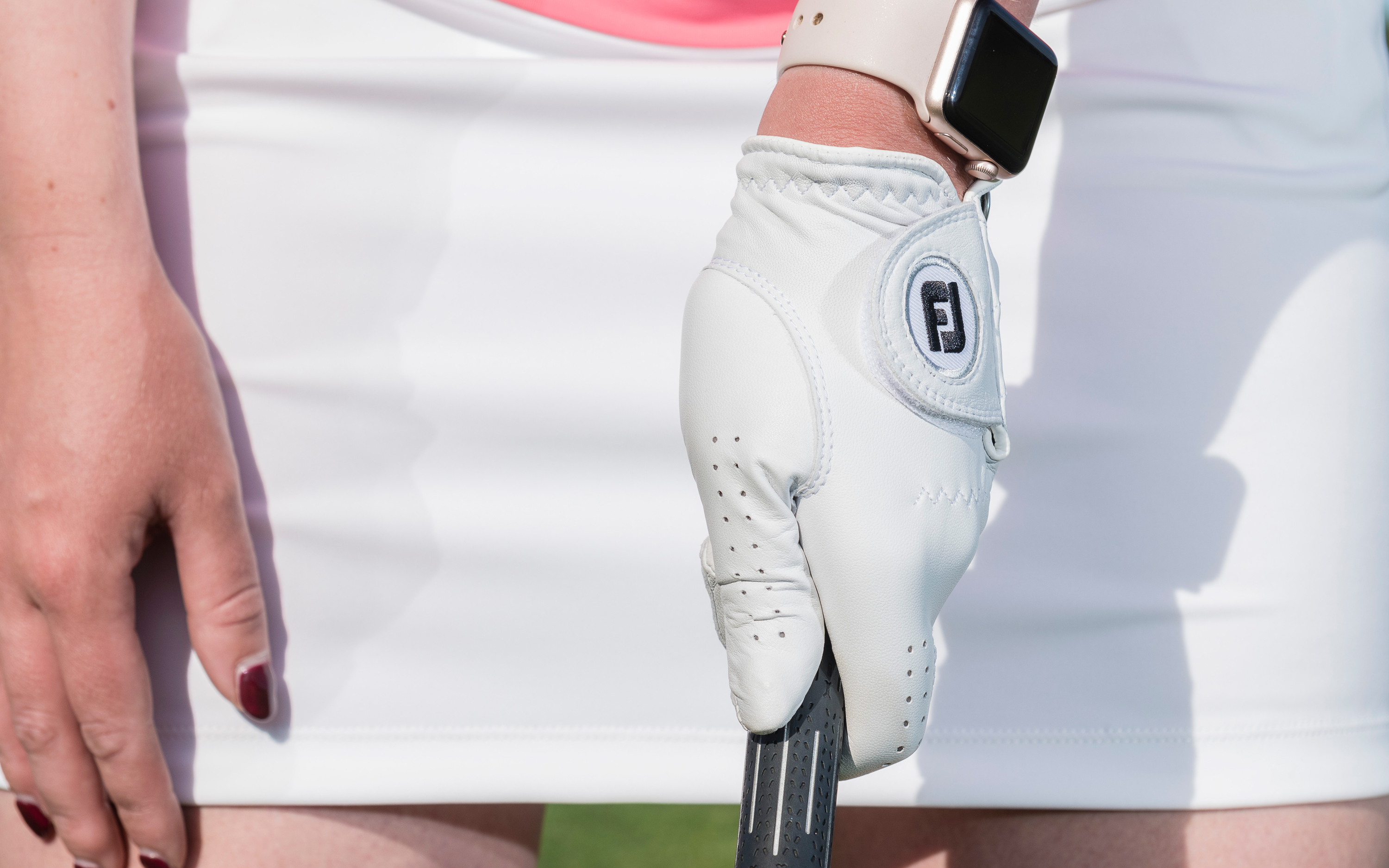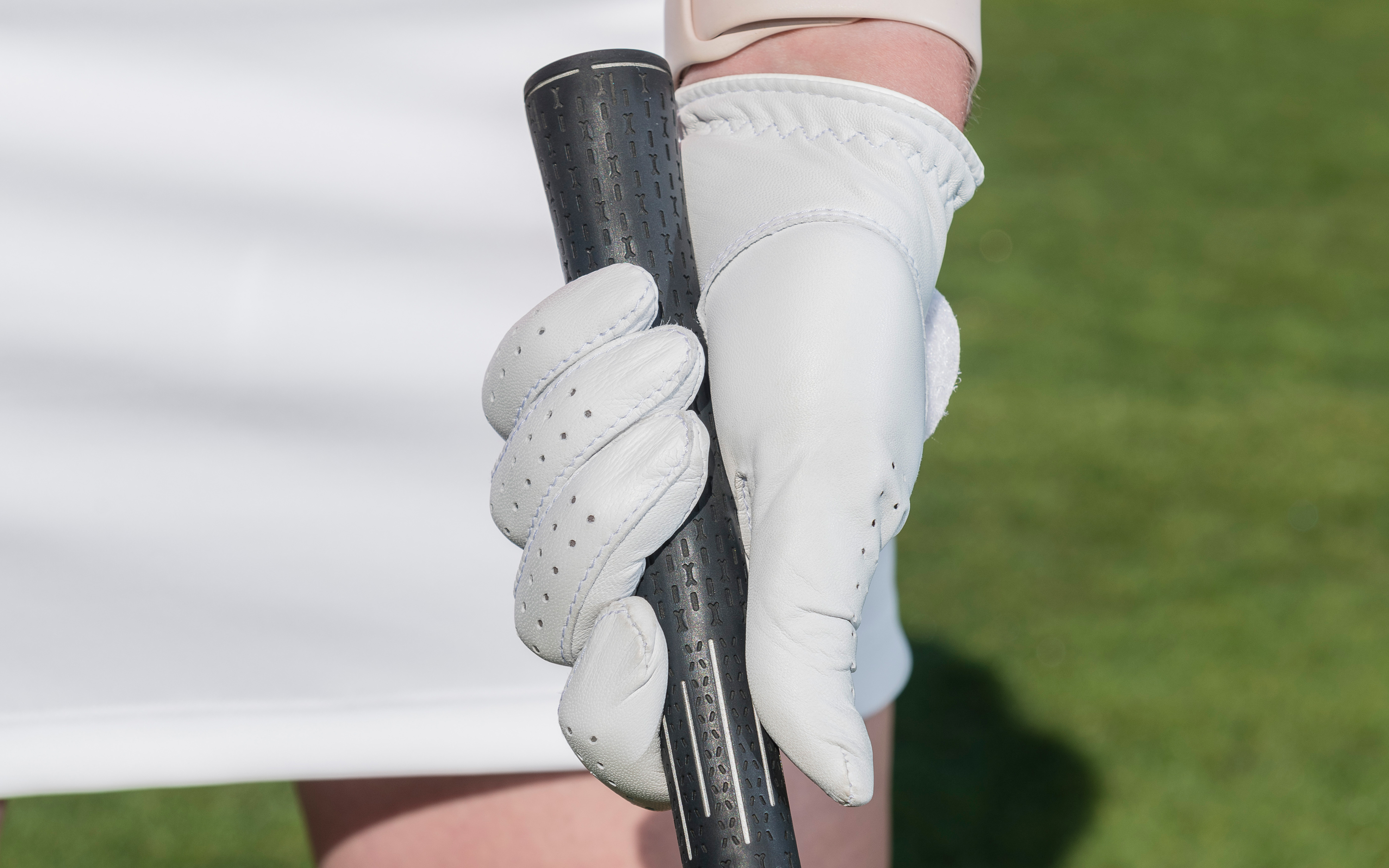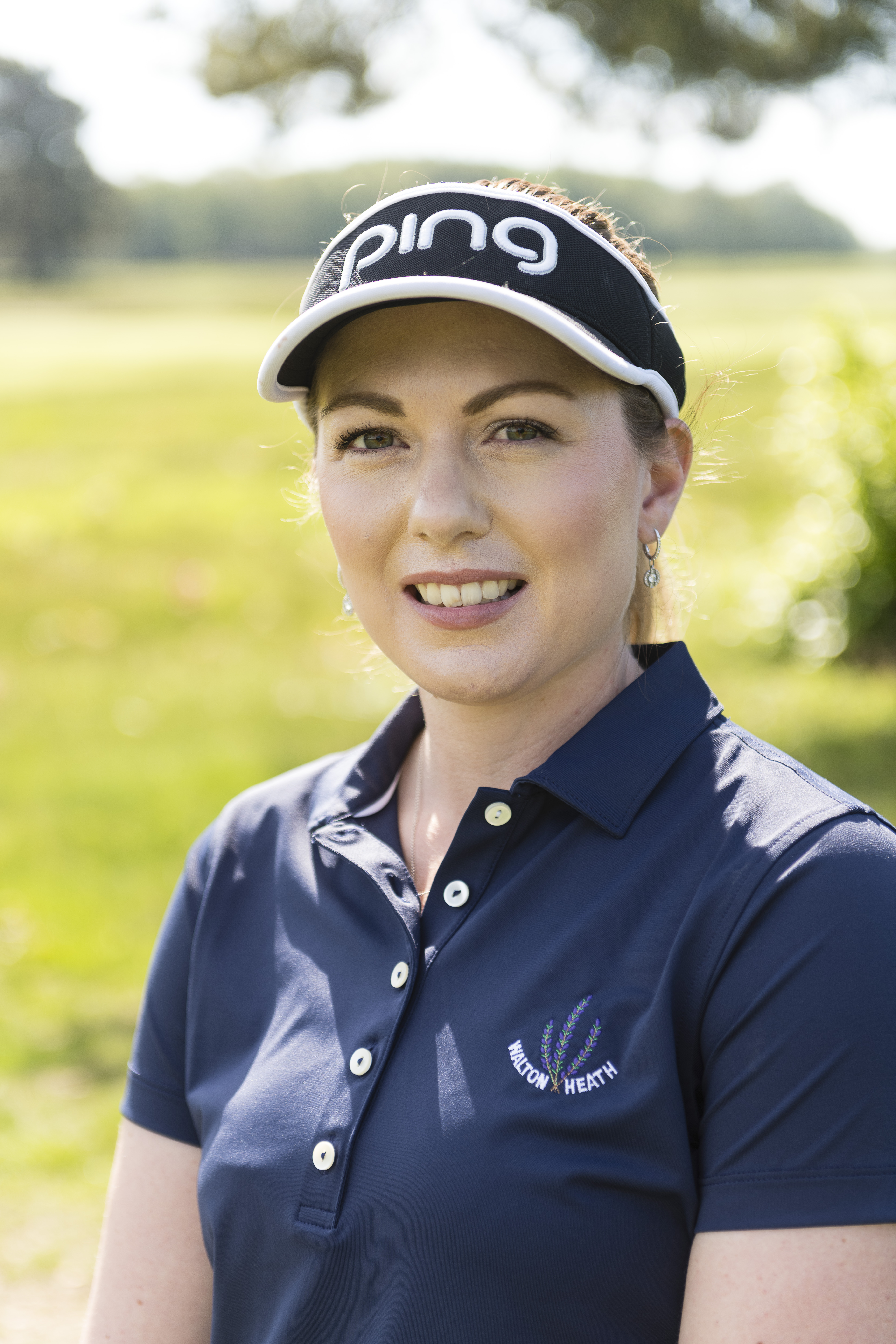How To Grip A Golf Club
Of all the aspects of the swing, this is the one thing you should always get right


Having the perfect golf grip is one of the fundamentals it is really important to get right. You might swing the club beautifully, but if you have a grip that is too weak or strong, you’re still going to struggle to hit the ball consistently straight.
It's also worth considering the size of your hands. Those with smaller hands tend to have a weak golf grip as the club sits too much in the palms. To check if this might be the cause of your issues, look to see how many knuckles are visible on your lead hand. If only one or less, it's time to make a change as this is likely causing you to lose power and leak the ball to the right.
Having a good grip helps to release the clubface through the hitting zone, creating a more efficient impact position, which equals more distance. So, how do you grip a golf club? Here are my tips...
Point the V at your shoulder

The 'V' created between your thumb and index finger should point towards your trail shoulder
To generate more leverage in the backswing, the club needs to sit more in the fingers. Aim to get the 'V' created between your thumb and index finger pointing towards your right shoulder, as per the image above. If done correctly, this will give you a lot more control of the clubface, allowing you to hit the ball further and straighter.
Lower = more control
This isn’t talked about as much as it should be, but a lot of people place their hands too high up on the grip. Most of the best golf grips have a line or cap at the top and you want at least that bit sticking out above the top of your hands.
From there, you want the back of the grip to be sitting right in the fold of your fingers, before wrapping your right hand around.
Aim for two knuckles

Golfers will often grip the club incorrectly with a 'long thumb', as demonstrated above
When gripping the club with the lead hand, a lot of people end up with a very long thumb. Instead, try and make sure there is no gap between your thumb and index finger. If you do this, as you put your trail hand in place, you should see the first two knuckles of your left hand when you look down – this gives you a perfect neutral golf grip.
Subscribe to the Golf Monthly newsletter to stay up to date with all the latest tour news, equipment news, reviews, head-to-heads and buyer’s guides from our team of experienced experts.
Along with how far to stand from the golf ball, finding the right grip is a vital fundamental in golf that everyone can get right. Work on the step-by-step routine above and you should see some significant improvements.

Location: Walton Heath
Jo teaches at Walton Heath and is a PGA Advanced Professional having graduated in 2011. She has helped hundreds of women and girls get into the game and she is a strong believer that, whatever your ability, everyone can get plenty out of the game. Jo is currently working towards a Doctorate in Sport and Exercise Science.
Teaching philosophy:
I like to keep things simple and try to articulate things in a way that is easy for the student to understand. I need to understand the technicalities of what is creating their ball flight, but I need to be able to communicate that to the student in a way that they can utilise.
A typical lesson:
My lessons begin with a lot of questioning, I want to understand what the person wants out of their lesson. I want to understand as much about their game and what they are struggling with. Once I’ve seen their flight and motion, I will often utilise video and TrackMan data to further understand/reinforce what I’m seeing. I always want my students to understand what we are changing and why. I then take the player through what we want to change, and how best to practise. I close my lessons by checking for understanding and asking the player to tell me what they going to work on.
Most common impact:
Angle of attack is often a common impact fault I see, with players either being too steep or too shallow. Most often this is caused by a lack of rotation or a poor concept where a player is trying to scoop or chop down on the ball. I try to correct the fault by demonstrating the concept before getting the player to make small, controlled swings to get a feel for the new movement. With some players I try to find a visualisation or an external focus of attention which helps them make the desired movement without overthinking.